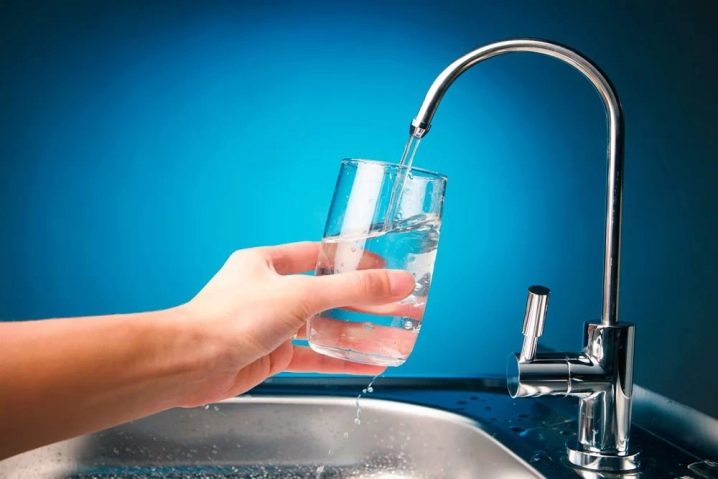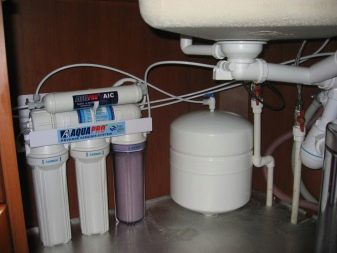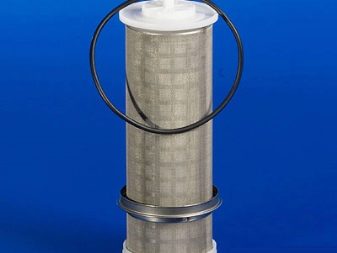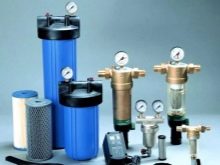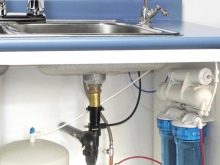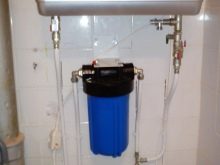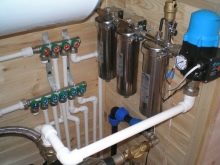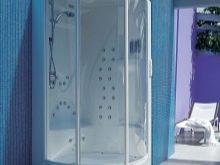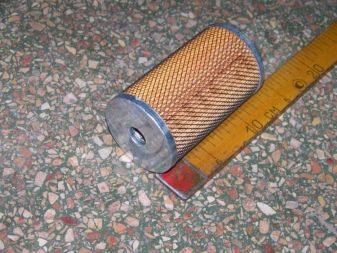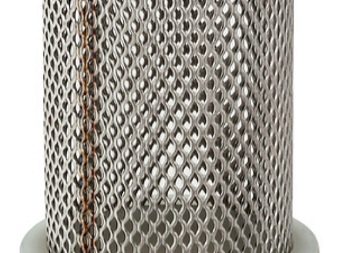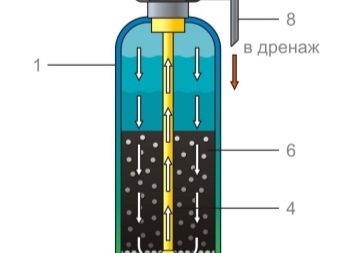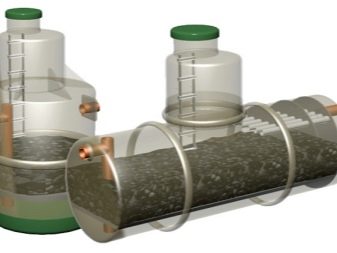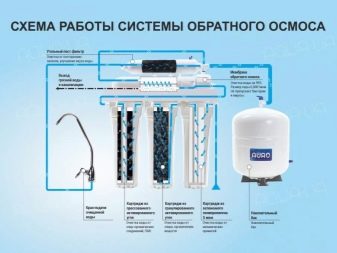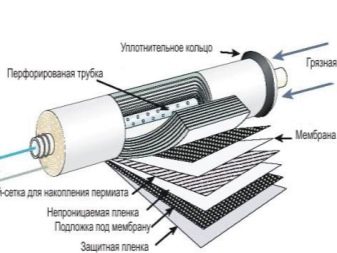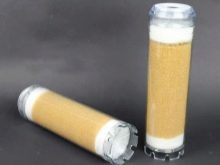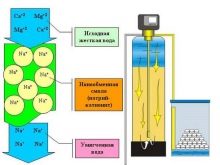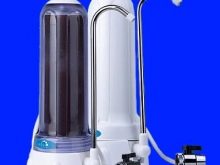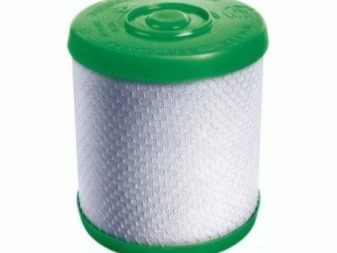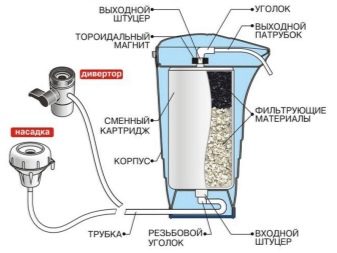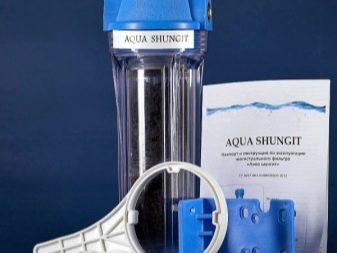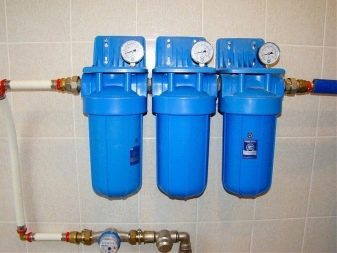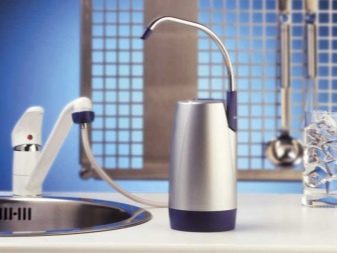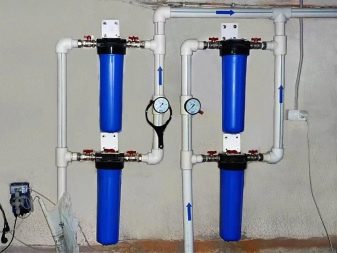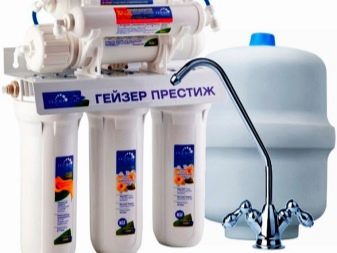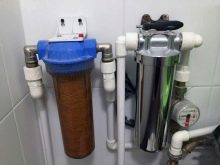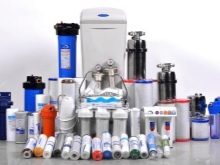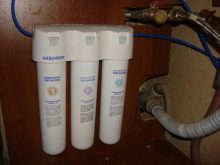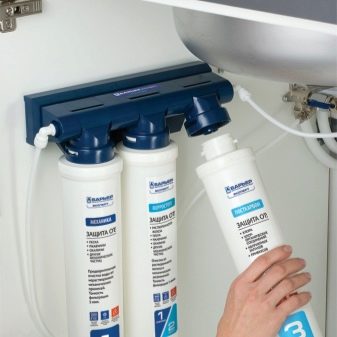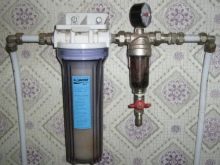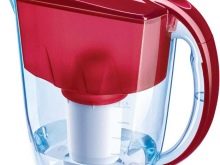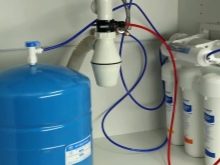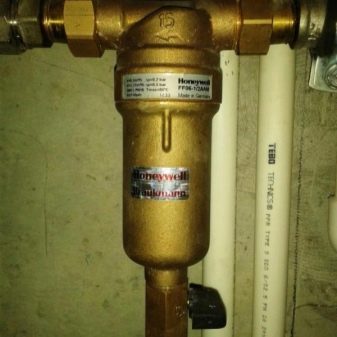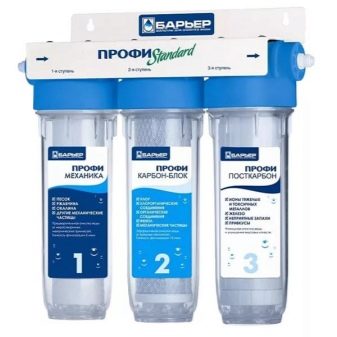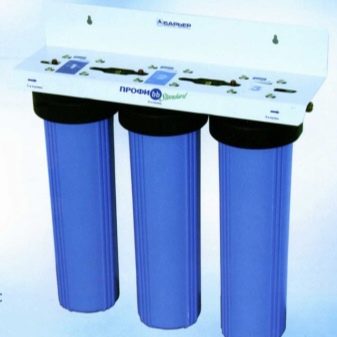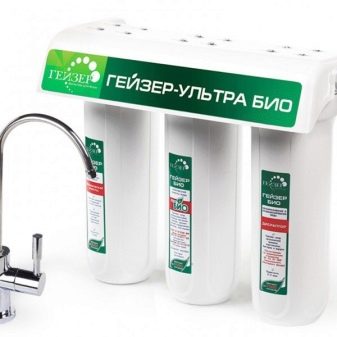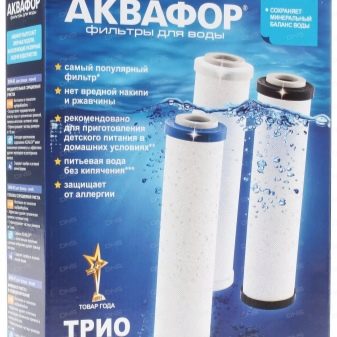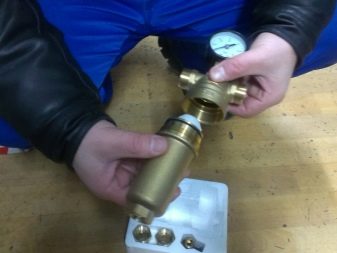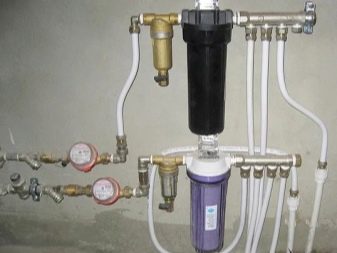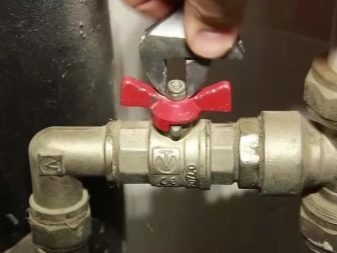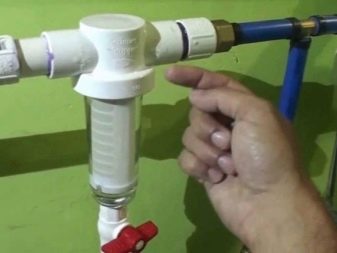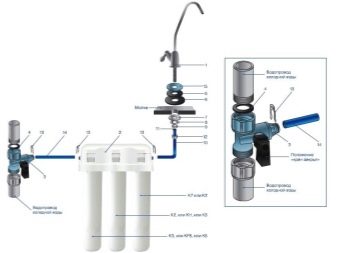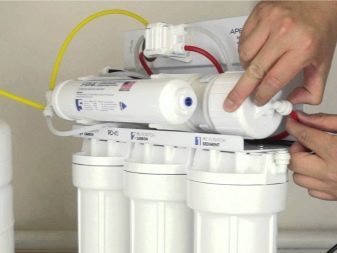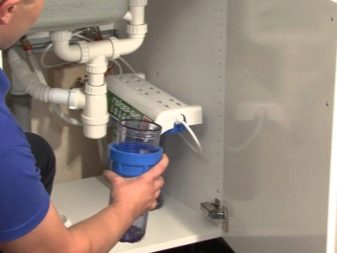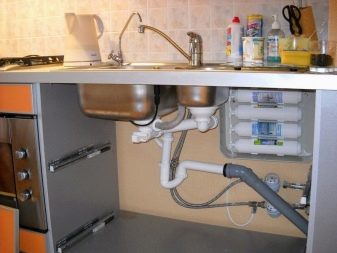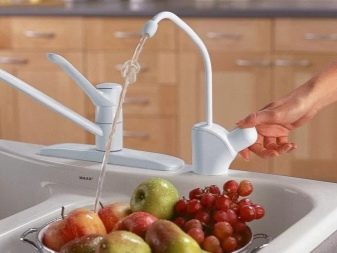Fine filters: features of choice and installation
The water coming from wells and boreholes, as well as running through the centralized water supply system, is far from ideal in terms of its composition and purity. Remove filters, as well as disinfect, remove residues of disinfectants, impurities and odors allow filters. They are coarse and fine cleaning, the latter will be discussed.
Description of the equipment
Fine filters are a group of devices designed to decontaminate, soften water, remove iron from it. They must be installed complete with coarse cleaning systems. In this case, the water must first be mechanically cleaned (litter, rust particles, sludge, sand), and then fed to the fine cleaning devices.Such a division of filters is arbitrary, but both species are able to trap insoluble impurities in the liquid.
The considered type of device filters pollution less than 5 microns and allows to regulate the composition of water. The fine cleaning systems include devices with filter sizes of 1–20 µm. Subspecies of fine filters are analogs of ultrafine cleaning, the cell size of which is not more than 1 micron.
Fine filters, first of all, retain small particles that pass through the coarse filter screen; secondly, they remove from the water hazardous compounds, eliminate the smell of hydrogen sulfide, improve the taste of water, soften it.
Units for secondary cleaning in the first place allow you to prepare the water and make it suitable for drinking and cooking. It is important that the purification and regulation of the composition of the water has a positive effect on the state of household appliances in contact with the liquid.
Washing machines and dishwashers are particularly sensitive to the quality of water.
Such cleaning systems are recommended to be installed before supplying water to hydromassage baths and showers, in front of boilers and meters.Clean and softened water will prolong the life of the equipment.
Regardless of the type, all fine cleaning systems have filtering material, which, passing water, retains contaminants. It is the dimensions of the transmissive cells and the characteristics of the filtering reagent that determine the degree of purification. Sorbents, metal nets, mineral fillers, ion exchange resins and others can take on the functions of the filtering layer.
Kinds
Depending on the characteristics of the filtering system, the following types of fine cleaning devices are distinguished.
Mesh
Represent a fine-meshed grid from a stainless steel or the anodized silver. It is characterized by simplicity of organization and efficiency, which determines the availability and relevance of this system.
Sorption
It is a bulk activated carbon water filter (ground and activated bark of hardwood or coconut shell). The filtering ability is caused, firstly, by the small space between the filter elements (granules) through which the fluid passes, but impurities are retained.In addition, when passing through the filter, the water decreases its speed, so the sludge and sand settle on the walls of the filter flask. Secondly, coal itself has the ability to clean, has anti-bacterial properties.
These types of filters are considered universal, since they carry out mechanical cleaning, eliminate chlorine residues, hydrogen sulfide odor and organic matter.
Membrane (reverse osmosis)
Provide the highest degree of purification. Structurally, they are several adjacent tanks. The most important element of the system is the main filter, as well as the polymer nanomembrane protecting it. A feature of this design is the need to maintain a certain pressure, for which it is equipped with a pump.
The reverse osmosis system is a multi-stage filtration: First, the liquid is cleaned from heavy suspensions, then filtration from residual chlorine (using activated carbon), as well as additional purification is carried out. The process ends with the passage of water through a membrane that passes only water and liquid molecules.
Thanks to such thorough purification, all bacteria and impurities are completely removed from the water, it is demineralized (that is, all minerals are excreted). It is impossible to call such a liquid useful to humans. The filter refers, rather, to industrial - used in laboratories, pharmacology.
Ion exchange
The principle of operation of this filter is identical to the hydrolysis technology. Filtration is carried out by means of cationic or anionic resins, which attract compounds having opposite polarity in the conditions of a liquid medium. The use of ion exchange filters allows the removal of heavy metal salts from a liquid, as well as the reduction of water hardness (by eliminating magnesium and calcium salts).
Fabric
Cartridge type devices, in which the cleaning function is performed by a tissue membrane laid in several layers. Outwardly, such a device resembles a cylinder, with fabric harnesses wound around it. The popularity of this system is due to its efficiency, availability and environmental friendliness of the filtering material. At the same time, it is designed to work during a specific cycle, after which it is necessary to replace the cartridge with a new one.Allows you to remove from water impurities, salts, metal oxides, as well as chemicals that are added to hot water.
Mineral
Provide a high degree of purification, combining the functions of coarse and fine filters. This becomes possible due to the filtering material - the minerals shungite and zeolite. Allow to remove from water impurities of iron and manganese. Must be equipped with an additional reservoir for brine, which is necessary to restore the filter.
Depending on the degree of cleaning (i.e. the size of the pass-through cells), the devices in question are ultra-thin. Their task is ultrathin filtering. Ultrafiltration is usually provided on the mixer for drinking water - such a liquid can be drunk directly from the tap.
If we talk about the features of installation, then there are:
- stationary filters (main type);
- filters, nozzles, or flow filters (mounted on the faucet).
The first ones provide the best degree of cleaning, are more durable, however, they have higher cost and complicated installation. Filter nozzles are good in cases where the mobility of the device is important, for example,in the country the opportunity to quickly install it on the crane, and then also quickly dismantle and continue operation in the conditions of a city apartment. Such nozzles are easy to install, they are mobile.
Depending on the material of manufacture of the filter housing emit plastic, metal and combined models. The first ones are suitable for cold and warm water, as they are made of heat-resistant plastic. Differ in price availability and the ability to see the degree of contamination of the filter due to the translucent walls of the plastic bulb. Metal, usually stainless steel, have a higher cost, however, and serving a longer period. Suitable for both cold and hot water.
Thus, it turns out that the material of manufacture usually determines the scope of application of the device. It can be for hot or cold water. Interchangeability is usually not practiced - plastic flasks will not withstand high temperatures and are deformed, and it is not rational to use a titanium or steel case for cold water because of its higher cost.
Finally, the filters are divided into cartridge and systems that need to be cleaned. The first ones are designed for a certain number of working cycles (on average, 2-3 months), after which the cartridge is replaced with a new one.
Wash type filters can be manually or automatically cleaned. Cleaning the first involves overlapping water throughout the house and the inclusion of water on the filter. In this case, the water is allowed in the opposite direction, and the filter element is placed under a stream of water. Contaminated liquid flows into a pre-set down bucket. Automatic self-washing analogue performs the same actions without user intervention.
How to choose?
Filters installed on the pipe have the best degree of purification, which is why they are chosen for apartments and private houses for year-round use. If you need mobile devices (for traveling, giving), then it is wiser to buy a nozzle or a jug-type filter.
It is also important to pay attention to the performance of the filter - how much water is purified during a specific period of time. The more users, the higher the performance should be. In addition, you can choose systems with tanks, which is stored purified water.The accumulation of the tank is carried out with the faucet closed, and when there is a need for clean water, it is enough to open the faucet to start the supply of liquid from the tank.
It is extremely important to choose such a filter that will cope with pollution and water impurities in a particular region. The only way to get one is to do a preliminary analysis of the composition of the water. To do this, the sample is given to specialized laboratories for research, after which the user receives a report that indicates the composition of the water, and also gives recommendations on the appropriate filtering method.
If we talk about the price range, it is striking. European products, as a rule, have a higher cost compared to domestic counterparts. So, fine filters of one of the most sought-after German brands Honeywell, depending on the functionality and quality of cleaning, have a cost in the range of 4–20 thousand rubles.
Identical devices made in Russia “Barrier”, the “Profi VV” line will cost 1700–2800 rubles. Products of TM "Geyser" are in demand. The cost of the device of reverse osmosis of this brand on average costs 5,000 rubles, and filters for the dacha - about 2.5–3 thousand rubles.A flexible pricing policy characterizes the products of another Russian manufacturer, Aquafor. In the product line you can find both jug-type filters, whose price is 1000 rubles, and systems for filtering water from a well for 70,000–80,000 rubles.
Such devices are highly sensitive to abrupt pressure changes, so it is better to equip them with a pressure regulator or choose devices where such a regulator is built-in.
Devices for fine cleaning can not be universal for water of different temperatures, in other words, a special unit should be selected for hot water.
Installation
The selection of the location of the fine filter depends on the condition of the pipeline. If we are talking about copper, plastic (including metal-plastic) plumbing or stainless steel system, the service life of which has not exceeded 10 years, then it is recommended to install the fine filter immediately after the analogue of mechanical cleaning.
On steel pipes, as well as water pipes operated for about 10 years, it is better to install the unit before each water consumption device (mixers, household appliances, toilet bowl).
Installation of fine filter in the country or country house is as follows:
- It is necessary to cut off the water supply to the house, then drain the remaining water from any tap.
- On a suitable section of the water supply, a part of the pipe is cut, corresponding in size to the dimensions of the filter.
- In front of the filter, a half-turn stopcock is mounted, which will allow to shut off the water supply to the filter.
- The filter housing is fixed on the pipe according to the instructions, all joints are sealed and sealed with a FUM tape.
- A cartridge is inserted into the installed flask, after which water is turned on and the operation of the device is checked.
For centralized water supply systems, systems with cleaning are usually chosen, for example, household osmotic devices.
Step-by-step instructions for installing them are as follows:
- Shut off the water supply, drain the remaining water in the tap.
- A part of the pipe is cut out under the sink, corresponding to the filter parameters, and a tie-in is installed.
- A drain clamp is installed on the surface of the drain pipe, slightly above the siphon. You can do this by drilling a hole in the drain and taping it with sealing tape.
- Installation of storage tank.The important point is that the valve should be screwed in with your own hands, without using tools (if tightened too much, defects and thread breakage are possible).
- After installation, the tightness of the joints is checked, and the primary washing of the system is also carried out. Water should be used and the tank should be filled. Then the water from the tank is drained, and the filter is considered ready for operation.
For high-quality water purification, it is necessary to install the device correctly and clean the filter element in a timely manner. To clean the filter, you need to turn off the water supply to it, remove the flask and pull out the filter from it. Flush the flask with water, insert a new cartridge.
Bulk material less often needs to be replaced, it can be restored up to 2-3 times, and then use a new one.
Tips
The quality of filtration determines the degree of purity of the filter material itself. In most cases, it is enough to look at this element to see if it needs replacing. For example, fabric changes color. In this case, it must be renewed or restored by boiling. User feedback suggests that with each boiling the filtering ability of the membrane is lost by about 20%. The maximum available number of restorations is 3-4 times.
Mineral filter elements change if salt appears on the surface. Popular adhesive counterparts signal the need for an update by changing the color of the drum.
Do you need fine filters in front of each appliance and mixer? Every homeowner gives his answer to this question. However, most agree that such devices are necessary in the kitchen, in front of water metering devices, washing machines and dishwashers (due to excessive rigidity, scale is deposited on their key elements). For all other needs, it suffices to limit the mechanical purification of water.
How to replace the filter elements in the fine filter yourself, see the following video.

